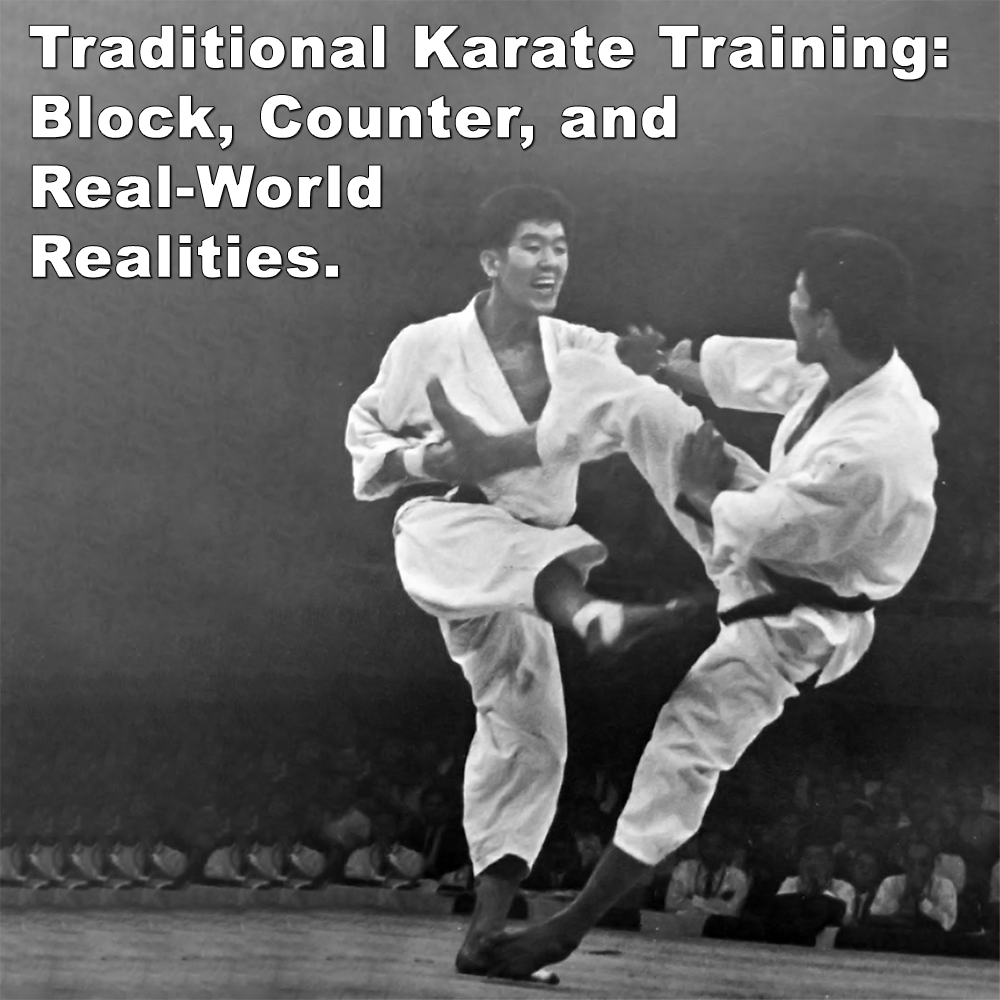
(Approx 2 minute 40 second read)
Many believe “traditional karate” is a direct descendant of ancient, battle-tested martial arts. However, the karate popularized and taught in schools and universities in Japan during the early 20th century underwent significant changes with many of the so-called ‘dangerous’ techniques removed.
.
Karate became a way to develop strong bodies, improve character, and help develop strong role models. It evolved into a competitive sport, with practices designed to ensure safety, especially for school children.
.
The majority of karate, as taught today, emphasizes defensive measures. You are trained to block first and follow up with a counter. This method is prevalent in your training, from basics to ‘step-kumite’ practices, to the applications extracted from kata.
.
Traditional karate, then, was never meant to protect you from a real-world assailant or a violent attacker.
.
Let’s explore this further.
.
How likely is it that, in the real world, an assailant will attack you empty-handed? Someone intent on taking your valuables or harming you will likely come swiftly and with a weapon.
.
From your very first karate class, you are taught to block. Not only are you trained to block everything, but you are also trained to block and then counter.
.
In ‘step-kumite,’ blocking first makes sense. However, this is not ideal if attacked with a weapon.
.
The counter-argument is that as you advance, you move on from ‘step-kumite’ to a more free-sparring scenario. But the emphasis remains on blocking, ‘block and counter’. The focus remains on blocking.
.
Traditional karate training isn’t designed for real-world encounters. It is for competition and empty-handed practice. Your training teaches you to respond to an attack, not to initiate one.
.
A reaction occurs in response to an action. In reacting, there is a slight delay, but more significantly, there is a thought process to determine the response.
.
When your mind is occupied with playing “catch up”, the correct reaction may not always be the right one.
.
Pre-modern karate was created to respond to real-world civilian violence. The block and counter-attack method of training was not the priority when it was originally conceived.
.
Why? Because, again, in a real-world scenario, you have to be the one to take action. Action is always faster than reaction.
.
Let’s introduce the kata.
.
Due to the prevailing philosophy, there is a tendency to perceive every kata application as a defense. When most people demonstrate a movement from kata, there is a response action – a defense. The attacker does a technique, and then you counter. This mindset makes it difficult to understand kata as originally intended.
.
The interpretation of traditional karate-do kata, influenced by a heritage of competition using only empty hands, has greatly hindered our ability to decipher the true message of kata. We have been conditioned to avoid the violent and effective methods contained within.
.
If we alter our perception of kata and consider the real message it tries to give us, we realize that most movements we perform, could actually be attacks, not defenses.
.
In real-world scenarios, knowing the enemy’s intentions is crucial. If they intend us harm, possibly in life-or-death confrontations, in such cases, it is better to act than to react. It is better to cause damage than to try to prevent it.
.
I will leave you with this thought: in my view, traditional karate, as commonly taught, may not be the most effective method for real-world self-defense. The block-and-counter approach can be less practical in scenarios involving real threats. When you analyze and study the application of kata, consider taking the initiative, responding to the threat before any defense, and taking control. Remember, it is faster to initiate action than trying to react to it.
.
.
Inspired by Rich Stamper Goju-Ryu
